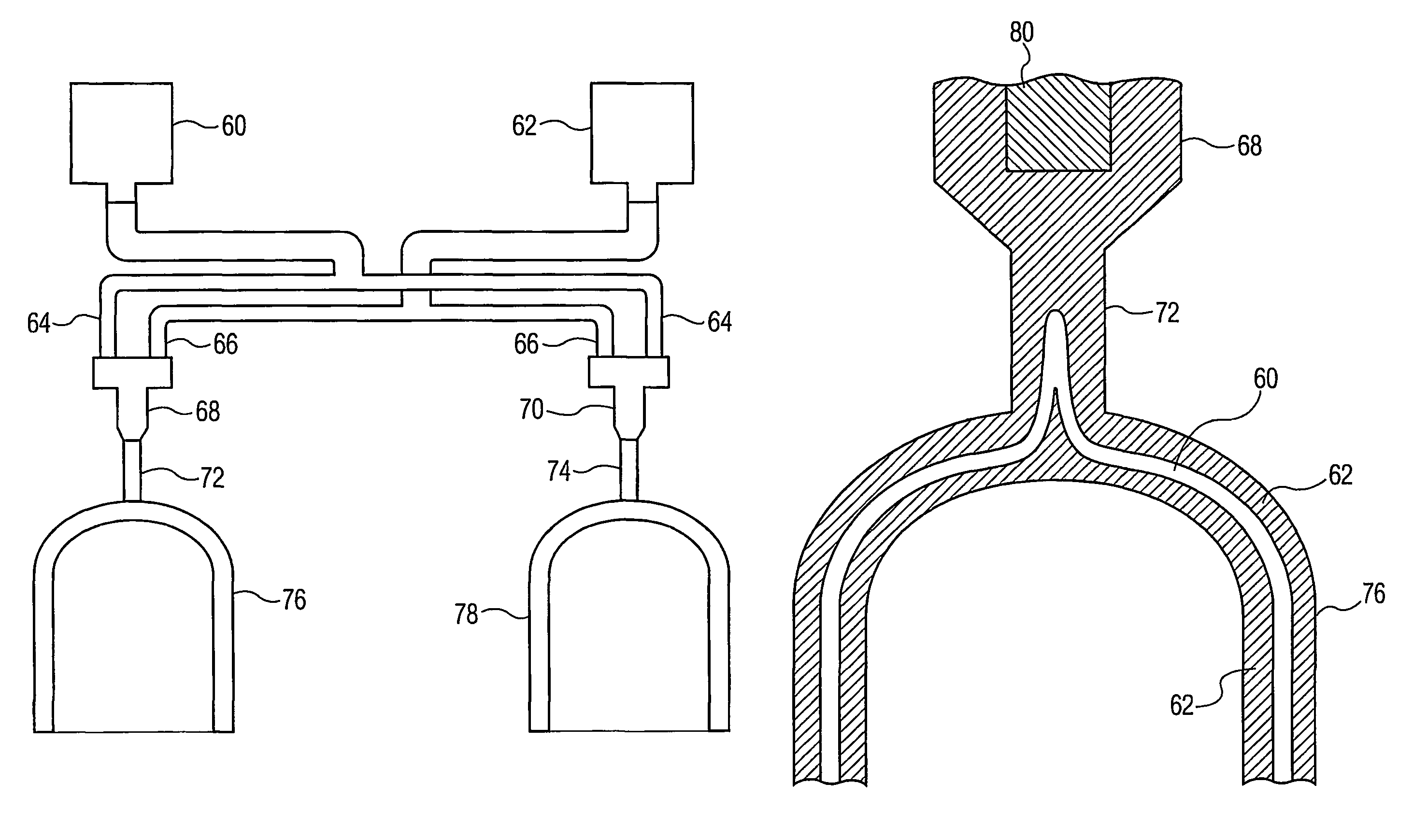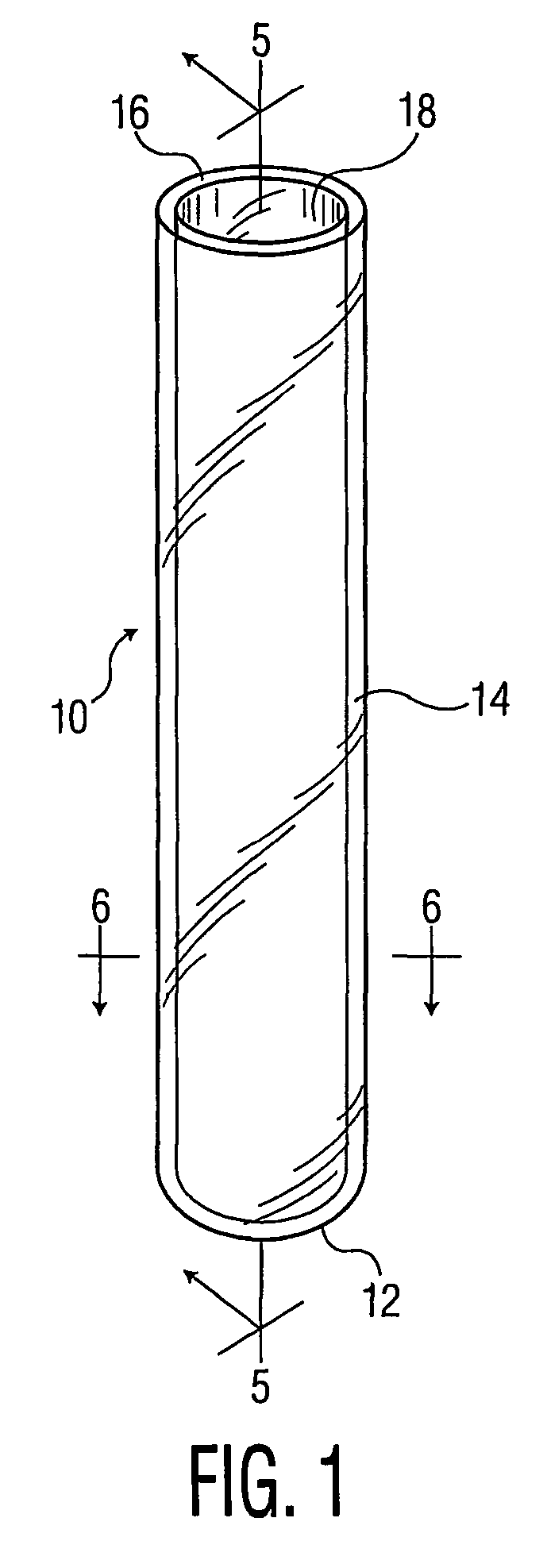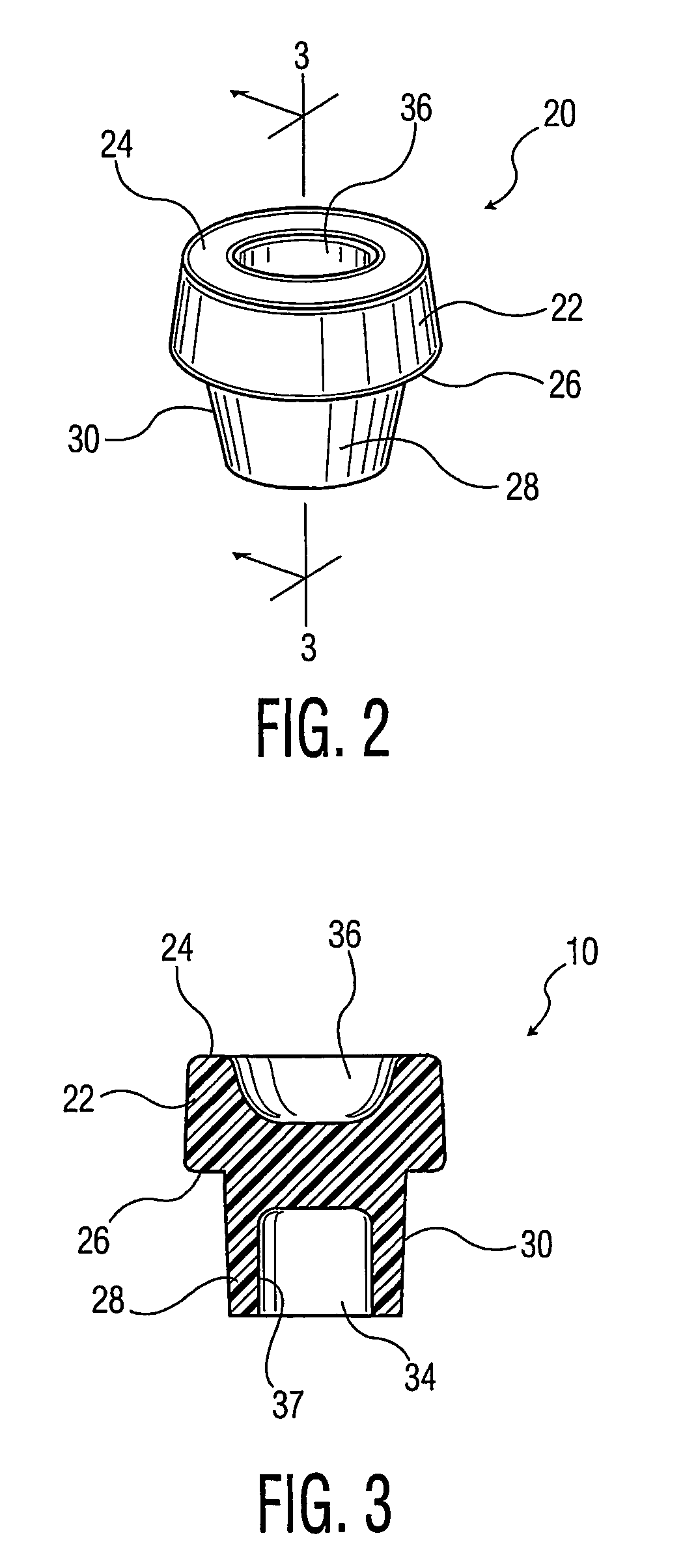Process for forming multilayer containers
a multi-layer container and container technology, applied in the field of plastic articles, can solve the problems of pp and pet containers being inherently subject to gas transmission, permeability problems becoming more acute, and gas permeability clearly being detrimental
- Summary
- Abstract
- Description
- Claims
- Application Information
AI Technical Summary
Benefits of technology
Problems solved by technology
Method used
Image
Examples
example 1
[0057]A PET tube and two multilayer tubes were made by a coinjection process as described above. All tubes were 16×100 mm size.
[0058]Run 1: PET tube with skin layer and core layer both PET.
[0059]Run 2: PET-COC-PET tube with inner and outer skin layers of PET and core layer COC.
[0060]Run 3: PEN-COC-PEN tube with inner and outer skin layers of PEN and core layer of COC.
[0061]Twenty tubes from each run were filled with 1 ml of water, evacuated to 200 mm Hg, and stoppered. The tubes were weighed. Ten tubes from each run were placed into a storage chamber at 25° C. and 50% relative humidity, and ten tubes from each run were placed in a storage chamber at 40° C. and 50% relative humidity. Average weight loss (i.e., water loss) for each run after 56 days is shown in Table 1.
[0062]
TABLE 1Average water loss (mg)Average water loss (mg)Tube@ 25° C. after 56 days@ 40° C. after 56 days158.3163.9213.2 50.536.0not measured
example 2
[0063]Three layer tubes of PP skin material and EVOH core material were fabricated according to the process described above. The tubes were 13 mm×75 mm, 2.0 ml draw tubes. Thirteen runs were made, the runs having variation in (1) the amount (volume percent) of EVOH present, and (2) the nominal extent of coverage of the EVOH in the tube, as shown in Table 2 below.
[0064]
TABLE 2NominalEVOH locatedEVOH locatedEVOH locatedSubstantiallyEVOHNo0.500 inches0.200 inches0.500 inchesCompleteCoverage inEVOH infrom top edgefrom top edgefrom bottom ofCoverage ofTube tubeand belowand belowtube and aboveEVOHNominalRun #1————0 vol. % EVOHNominal—Run #5 Run #4 Run #3 Run #2 5 vol. % EVOHNominal—Run #9 Run #8 Run #7 Run #6 8 vol. % EVOHNominal—Run #13Run #12Run #11Run #1010 vol. %EVOH
[0065]For each run, multiple wet and dry tubes were prepared, and tested. Wet tubes were prepared by first weighing the empty tube, placing 0.2 ml of water therein, and reweighing. The wet tubes were then conventionally ev...
PUM
| Property | Measurement | Unit |
|---|---|---|
| thickness | aaaaa | aaaaa |
| RH | aaaaa | aaaaa |
| internal diameter | aaaaa | aaaaa |
Abstract
Description
Claims
Application Information
 Login to View More
Login to View More - R&D
- Intellectual Property
- Life Sciences
- Materials
- Tech Scout
- Unparalleled Data Quality
- Higher Quality Content
- 60% Fewer Hallucinations
Browse by: Latest US Patents, China's latest patents, Technical Efficacy Thesaurus, Application Domain, Technology Topic, Popular Technical Reports.
© 2025 PatSnap. All rights reserved.Legal|Privacy policy|Modern Slavery Act Transparency Statement|Sitemap|About US| Contact US: help@patsnap.com



